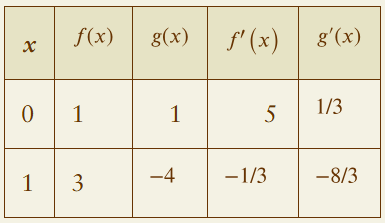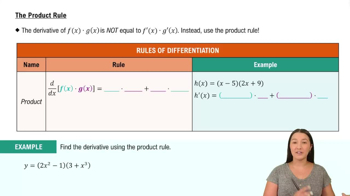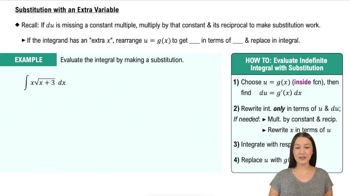The number of gallons of water in a tank t minutes after the tank has started to drain is Q(t) = 200(30 - t)². How fast is the water running out at the end of 10 min? What is the average rate at which the water flows out during the first 10 min?
Table of contents
- 0. Functions7h 54m
- Introduction to Functions16m
- Piecewise Functions10m
- Properties of Functions9m
- Common Functions1h 8m
- Transformations5m
- Combining Functions27m
- Exponent rules32m
- Exponential Functions28m
- Logarithmic Functions24m
- Properties of Logarithms36m
- Exponential & Logarithmic Equations35m
- Introduction to Trigonometric Functions38m
- Graphs of Trigonometric Functions44m
- Trigonometric Identities47m
- Inverse Trigonometric Functions48m
- 1. Limits and Continuity2h 2m
- 2. Intro to Derivatives1h 33m
- 3. Techniques of Differentiation3h 18m
- 4. Applications of Derivatives2h 38m
- 5. Graphical Applications of Derivatives6h 2m
- 6. Derivatives of Inverse, Exponential, & Logarithmic Functions2h 37m
- 7. Antiderivatives & Indefinite Integrals1h 26m
- 8. Definite Integrals4h 44m
- 9. Graphical Applications of Integrals2h 27m
- 10. Physics Applications of Integrals 3h 16m
- 11. Integrals of Inverse, Exponential, & Logarithmic Functions2h 31m
- 12. Techniques of Integration7h 41m
- 13. Intro to Differential Equations2h 55m
- 14. Sequences & Series5h 36m
- 15. Power Series2h 19m
- 16. Parametric Equations & Polar Coordinates7h 58m
3. Techniques of Differentiation
The Chain Rule
Problem 3.6.76b
Textbook Question
Suppose that the functions f and g and their derivatives with respect to x have the following values at x = 0 and x = 1.

Find the derivatives with respect to x of the following combinations at the given value of x.
b. f(x)g³(x), x = 0
 Verified step by step guidance
Verified step by step guidance1
Step 1: Recognize that the function to differentiate is f(x)g³(x). To find its derivative, use the product rule and the chain rule.
Step 2: Apply the product rule: If h(x) = f(x)g³(x), then h'(x) = f'(x)g³(x) + f(x) * d/dx[g³(x)].
Step 3: Use the chain rule to differentiate g³(x): d/dx[g³(x)] = 3g²(x)g'(x). Substitute this into the product rule.
Step 4: Substitute the values of f(x), g(x), f'(x), and g'(x) at x = 0 from the table into the derivative expression. Specifically, f(0) = 1, g(0) = 1, f'(0) = 5, and g'(0) = 1/3.
Step 5: Combine the terms from the product rule and chain rule to express the derivative at x = 0. Simplify the expression without calculating the final numerical value.
 Verified video answer for a similar problem:
Verified video answer for a similar problem:This video solution was recommended by our tutors as helpful for the problem above
Video duration:
5mPlay a video:
Was this helpful?
Key Concepts
Here are the essential concepts you must grasp in order to answer the question correctly.
Product Rule
The product rule is a fundamental differentiation rule used when finding the derivative of the product of two functions. If u(x) and v(x) are differentiable functions, the derivative of their product is given by (uv)' = u'v + uv'. This rule is essential for solving problems involving the derivative of a product, such as f(x)g³(x).
Recommended video:

The Product Rule
Chain Rule
The chain rule is used to differentiate composite functions. If a function y = g(u) and u = f(x), then the derivative dy/dx is found by multiplying the derivative of g with respect to u by the derivative of u with respect to x, or dy/dx = (dy/du) * (du/dx). This rule is crucial when dealing with functions raised to a power, like g³(x), where g(x) is a function of x.
Recommended video:

Intro to the Chain Rule
Substitution of Values
Substitution involves replacing variables with specific values to evaluate expressions or derivatives at particular points. In this problem, after applying the product and chain rules, substitute x = 0 into the derived expression using the given values for f(x), g(x), f'(x), and g'(x) to find the derivative at x = 0. This step is necessary to obtain the numerical result.
Recommended video:

Substitution With an Extra Variable

 5:02m
5:02mWatch next
Master Intro to the Chain Rule with a bite sized video explanation from Patrick
Start learningRelated Videos
Related Practice
Textbook Question
